Navigating the complex world of life sciences compliance can be daunting. Regulatory requirements are ever-evolving, demanding precision and diligence.
Organizations in the life sciences sector need robust tools to manage these challenges. Life sciences regulatory software offers a solution, streamlining compliance processes and ensuring adherence to standards.
Choosing the best software for life sciences regulatory needs is crucial. It involves evaluating features like document management, compliance tracking, and audit management.
The right regulatory software solutions can enhance efficiency and reduce the risk of non-compliance. They provide integration capabilities, supporting existing systems and tools.
This guide will explore top life sciences software options, helping you make informed decisions. Discover how these tools can empower your organization in maintaining regulatory compliance.
Understanding Life Sciences Regulatory Challenges
The life sciences industry is uniquely regulated. These regulations are strict, aiming to ensure the safety and efficacy of products. Companies face numerous challenges in staying compliant with these standards.
Key challenges include managing vast amounts of data and meeting diverse global regulatory requirements. Organizations must continuously update their processes to accommodate new regulations.
Here are some common regulatory challenges in life sciences:
- Navigating complex approval processes
- Ensuring data integrity and security
- Adapting to changing regulations worldwide
Implementing regulatory compliance tools can help address these challenges. They streamline operations and improve data handling processes. By understanding these hurdles, organizations can better prepare and strategize their compliance efforts.
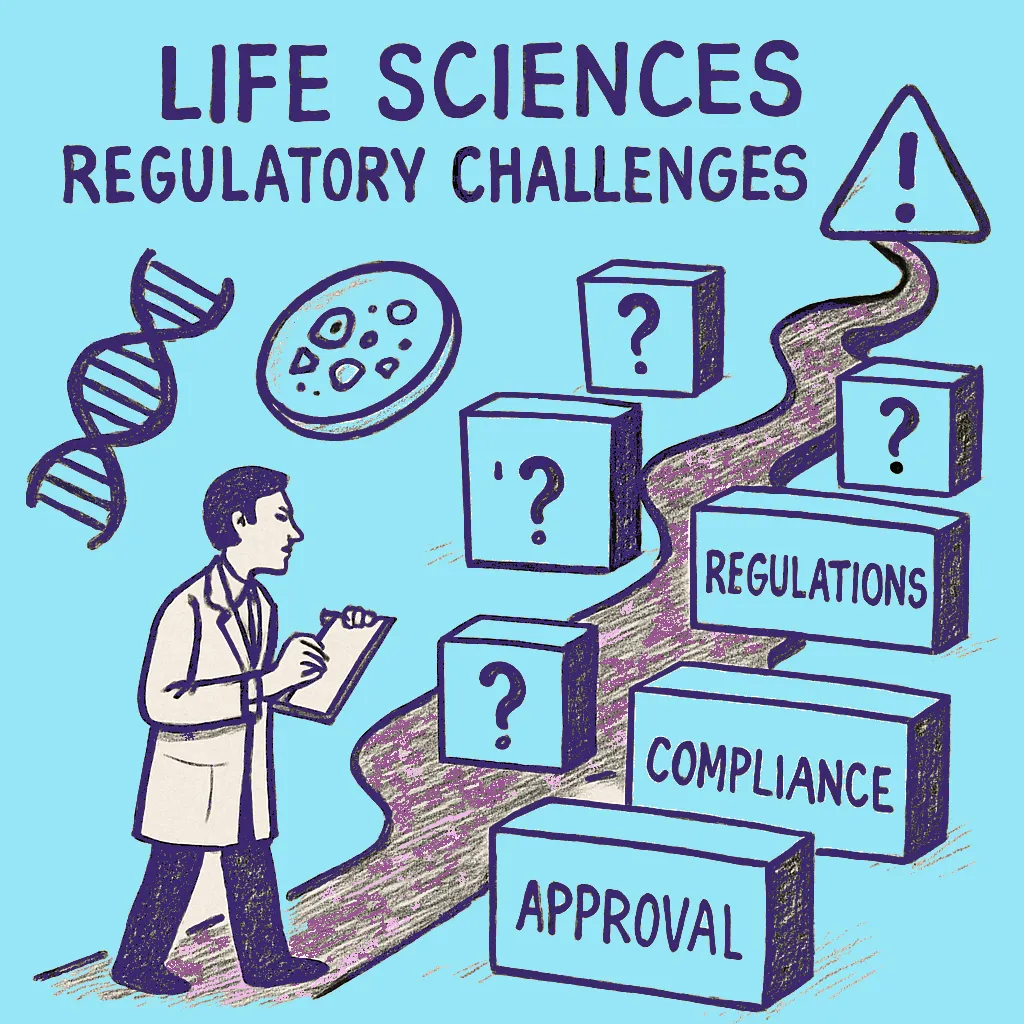
Key Features to Look for in Life Sciences Regulatory Software
Choosing the right regulatory software is crucial for compliance. There are several key features to prioritize when evaluating solutions.
First, look for comprehensive document management capabilities. This feature helps in organizing and securing essential documents. It ensures easy retrieval of data during audits.
Integration capabilities are also important. Software that integrates with existing systems simplifies workflows. Seamless compatibility enhances efficiency and minimizes manual data entry errors.
Consider these essential features:
- Compliance tracking and real-time monitoring
- Audit management and reporting tools
- Risk management and quality control features
User-friendliness is another critical consideration. The best software for life sciences regulatory needs should be intuitive. Easy navigation and user interfaces reduce training time for staff.
Finally, choose software that supports electronic submissions and digital signatures. This feature streamlines the approval process and enhances security. Embracing digital tools is key to staying competitive in today's fast-paced environment.

Top Life Sciences Regulatory Software Solutions in 2026
As we move through 2026, life sciences organizations face increasing regulatory complexity and data demands. Labs are expected to maintain FDA-grade data integrity, ISO-certified quality systems, and real-time traceability—all while accelerating product development and innovation. Choosing the right regulatory platform now determines how efficiently a company can scale and stay compliant.
Scispot® — The Modern Standard for Life Sciences Compliance and Integration
Scispot® leads the new generation of regulatory and quality management platforms. It unifies Electronic Lab Notebook (ELN), Laboratory Information Management System (LIMS), Laboratory Information System (LIS), and Scientific Data Management System (SDMS) capabilities within a single, AI-powered environment.
Built for biotech startups and enterprise pharma alike, Scispot® ensures FDA 21 CFR Part 11, EU Annex 11, ISO 15189, and ISO 17025 compliance through automation, traceability, and interoperability. Unlike traditional systems that function as isolated silos, Scispot® acts as a connected regulatory backbone, managing everything from raw data capture to submission-ready documentation.
Seamless Integration Across Your Ecosystem
Scispot® is API-first and designed for effortless integration. Its GLUE engine links data from every layer of the lab and enterprise environment:
- Instruments & Robotics: Integrates with platforms like Hamilton, Automata LINQ, Thermo Fisher, and Agilent to collect and validate data from analyzers, spectrometers, and plate readers automatically.
- Analytics & Visualization: Connects with Jupyter, RStudio, and Power BI to transform QC or experimental data into audit-ready visual insights.
- Enterprise & Clinical Systems: Syncs with SAP, MasterControl, EMR systems, and QMS software for full traceability—from patient samples to product release.
- Cloud & AI Platforms: Runs on secure AWS and Azure environments, with built-in AI agents that analyze deviations, detect anomalies, and prepare inspection-ready reports.
Every integration maintains tamper-evident audit trails, ensuring verifiable data lineage and complete traceability. The result is a unified compliance network that connects instruments, teams, and regulators in real time.
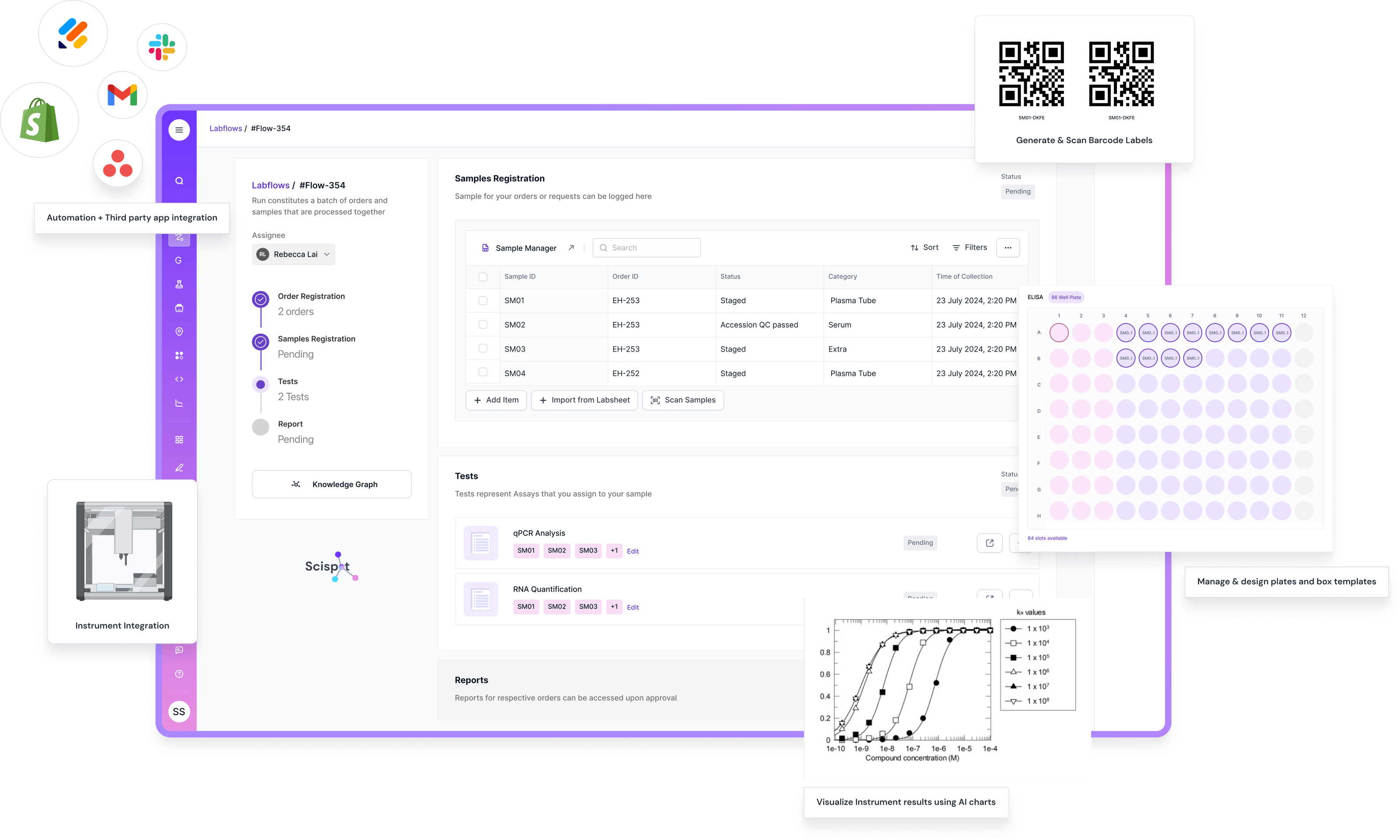
How Scispot® Compares to Other Leading Solutions
- Veeva Vault continues to dominate document and content management for regulatory affairs. It’s widely used for submission workflows but lacks deep lab-level data integration.
- MasterControl remains a strong choice for quality and audit management. However, it requires external systems for scientific data processing and analytics.
- Sparta Systems offers solid enterprise-scale quality management tools but is slower to adapt to agile or AI-driven workflows.
- SAP Life Sciences brings advanced analytics and reporting but demands significant customization to integrate with lab systems.
- Qumas focuses on risk and compliance management with good dashboards but minimal laboratory or instrument connectivity.
Scispot® bridges the gap between these traditional QMS/Regulatory tools and the modern lab, combining regulatory compliance, data automation, and AI intelligence in one modular, configurable platform.
From Compliance to Intelligence
The next era of life sciences compliance will be defined by integration and intelligence. Legacy systems manage documents; Scispot® manages data, trust, and transformation.
By connecting every instrument, database, and workflow, Scispot® helps labs achieve audit readiness, reduce manual effort, and focus on discovery rather than documentation.

In 2026, forward-thinking life sciences companies choose Scispot® not just to stay compliant—but to turn compliance into a competitive advantage.
How to Choose the Best Regulatory Compliance Software for Life Sciences
Choosing the best regulatory compliance software for life sciences involves several considerations. Begin by identifying your organization's specific needs. This ensures that the software aligns with your regulatory goals and operational processes.
Evaluating different vendors is crucial. Consider their reputation, industry experience, and history of successful implementations. Check if they offer robust customer support and provide regular software updates.
Create a checklist to aid your decision-making:
- Integration Capabilities: Can the software easily connect with existing tools?
- User-Friendliness: Is the interface intuitive for your team?
- Scalability: Can it grow with your organization?
- Cost and Licensing: Does pricing fit your budget?
- Vendor Support: Is there reliable customer service?
Your selection process should also include trial versions. Testing software gives insight into its functionality and compatibility. Engaging with current users of the software can provide valuable feedback and uncover potential issues.
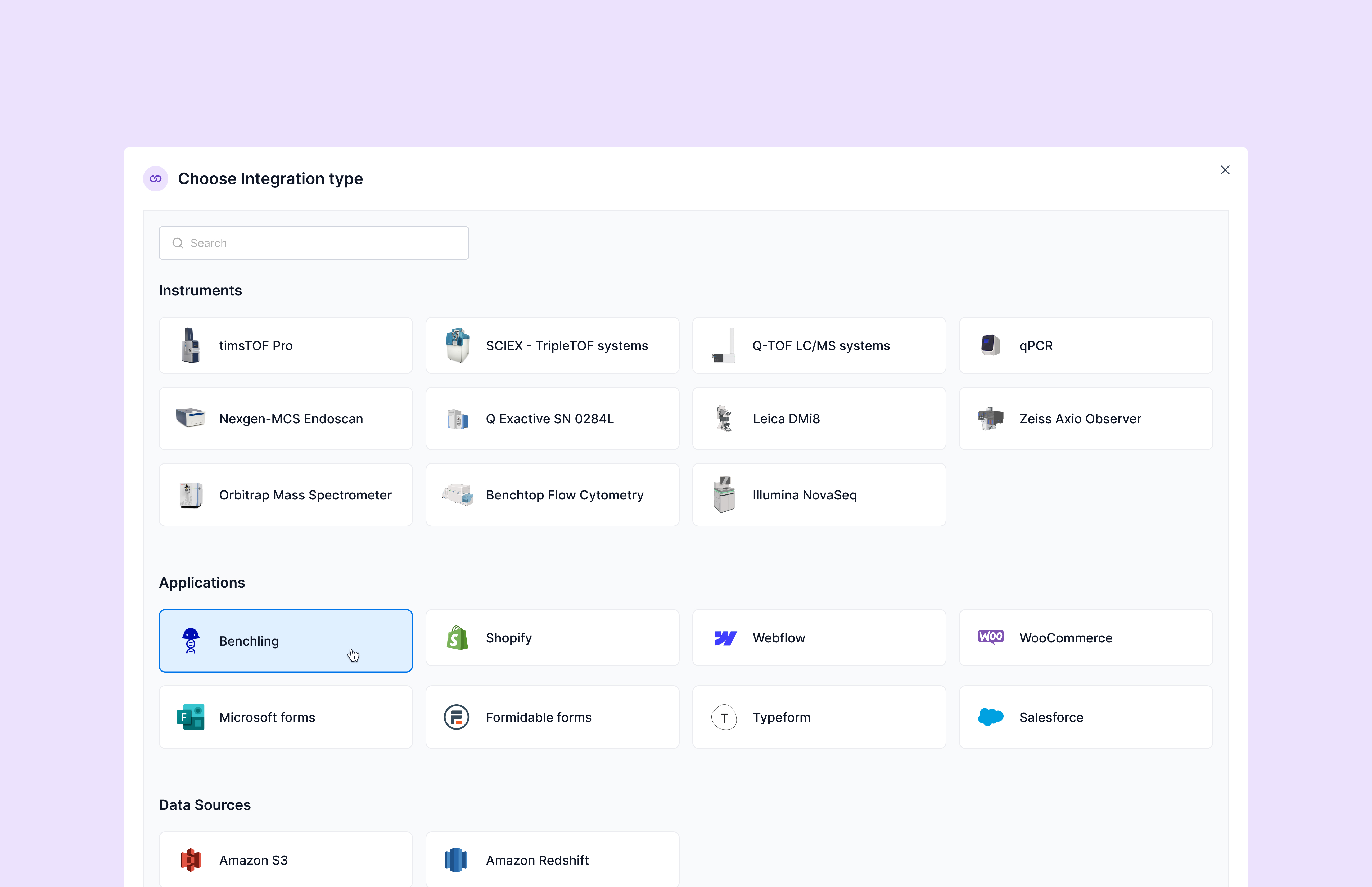
Benefits of Implementing Regulatory Management Software
Regulatory management software offers numerous advantages for life sciences organizations. By streamlining compliance processes, it reduces the risk of non-compliance. This decreases the chance of incurring penalties and fines, protecting your organization's reputation.
Moreover, these software solutions enhance efficiency. They automate repetitive tasks, freeing up resources for strategic initiatives. This can lead to cost savings and increased productivity across departments.
Key benefits include:
- Improved Data Integrity: Ensures accurate records.
- Enhanced Collaboration: Facilitates team coordination.
- Real-time Reporting: Offers instant compliance insights.
Additionally, regulatory software supports scalability. As your organization grows, the software can adapt, ensuring continued compliance. It also allows seamless access to historical data, simplifying audits and inspections. Embracing these technologies can transform compliance management in the life sciences industry.
.gif)
Best Practices for Successful Implementation and Adoption
Effective implementation of regulatory management software is crucial. Proper planning and stakeholder engagement foster successful adoption. It's important to ensure that all users are trained to maximize the software's potential.
Begin by evaluating your organization's specific needs and setting clear objectives. Next, involve users in the software selection process to increase buy-in.
Key practices include:
- Comprehensive Training: Equip staff with necessary skills.
- Phased Rollout: Implement in stages for smoother transitions.
- Continuous Support: Provide ongoing assistance to users.
These practices can help you achieve a seamless integration of regulatory management software, enhancing compliance and operational efficiency across your organization. Remember, consistent evaluation and updates to the system can further boost effectiveness.
Conclusion: Empowering Compliance in Life Sciences
Selecting the best life sciences regulatory software is pivotal for compliance. It enhances efficiency and mitigates compliance risks. By embracing advanced software solutions, organizations can stay ahead in regulatory requirements and maintain high standards.
The right tools empower teams, streamline processes, and boost overall performance. Investing in robust software can pave the way for sustained success in the life sciences field.




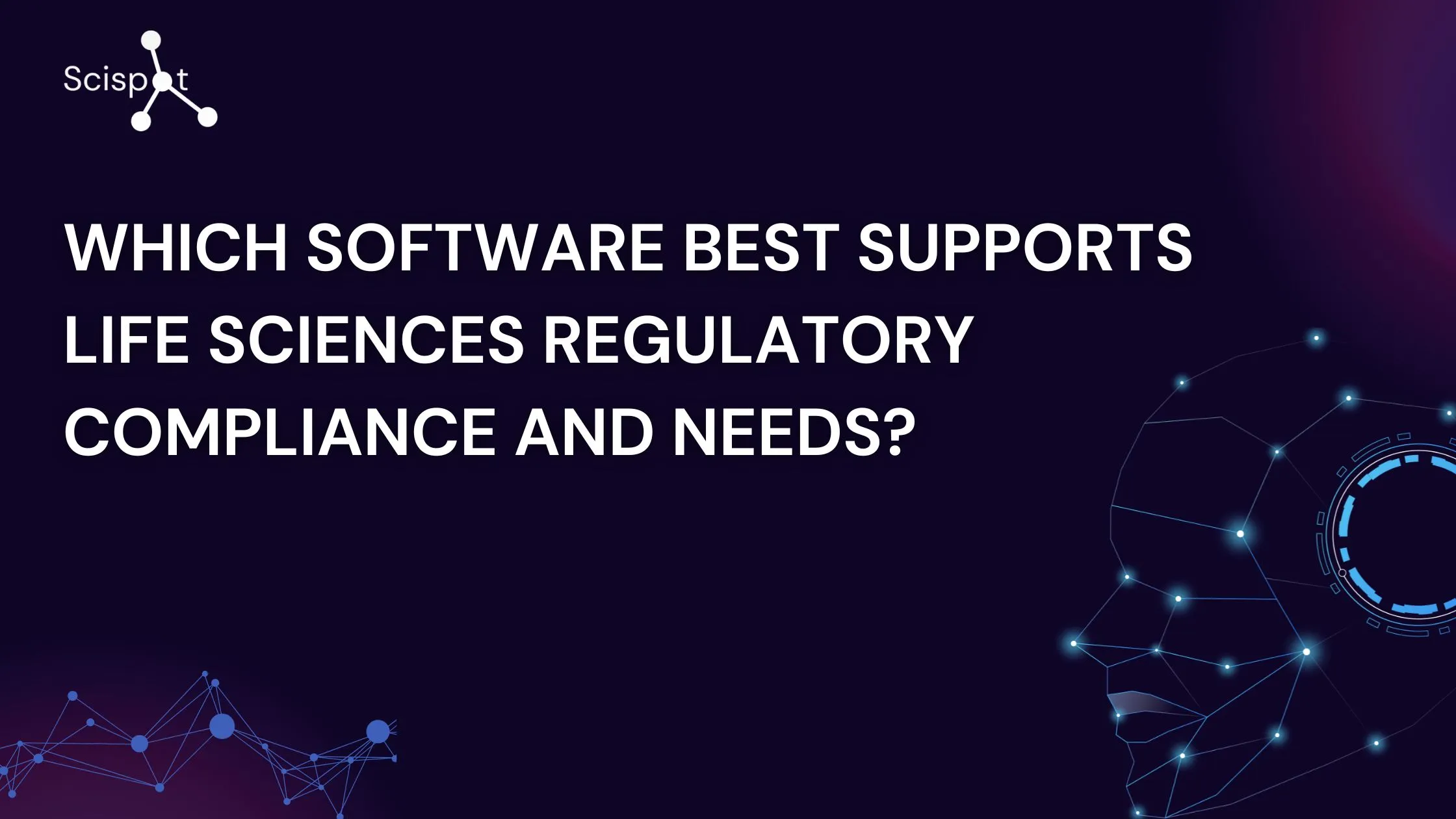
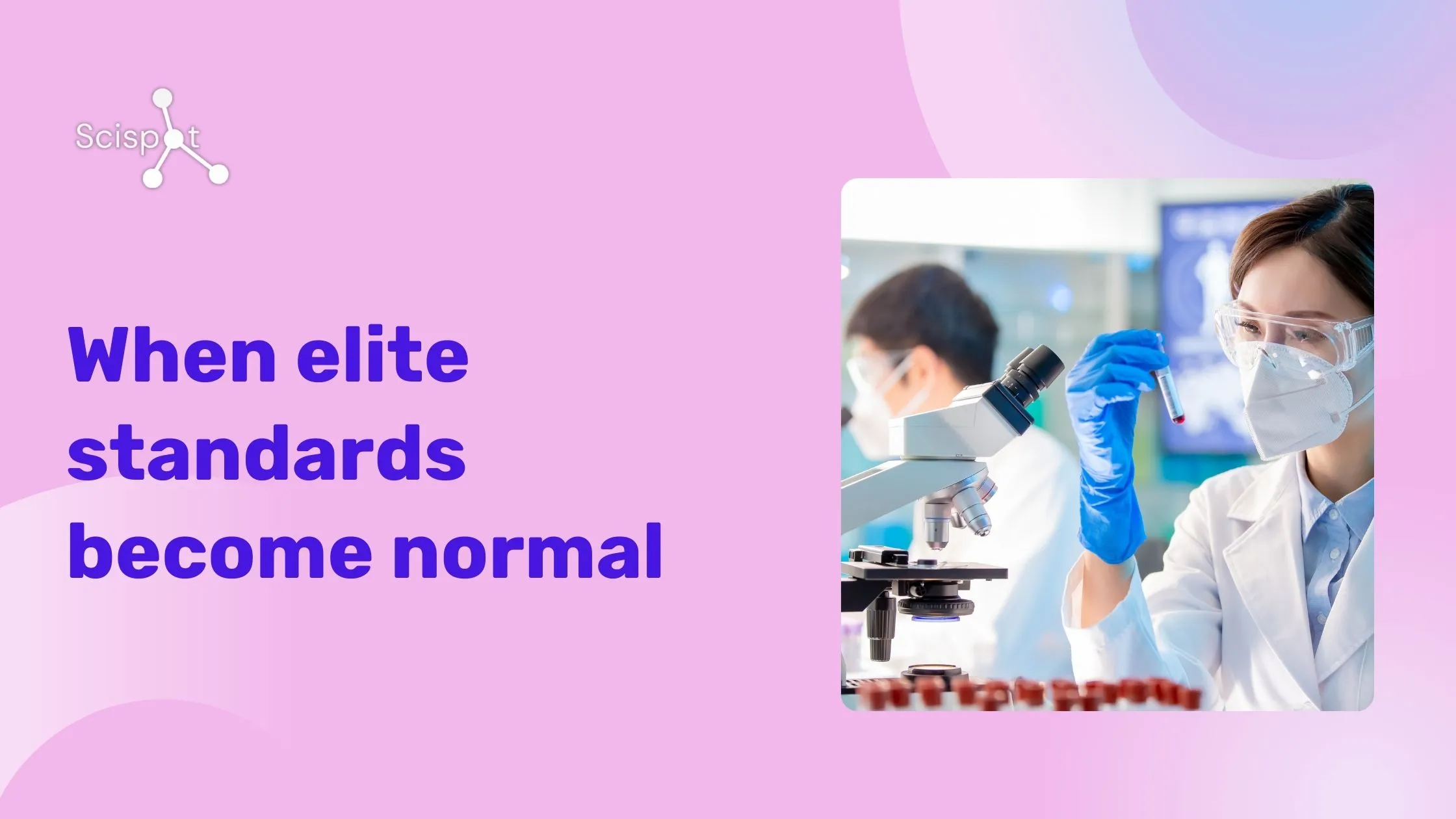
.webp)
.webp)



